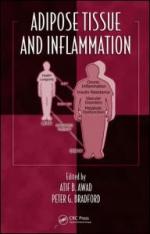|
This section contains 334 words (approx. 2 pages at 300 words per page) |
Inflammation is a localized, defensive response of the body to injury and is usually characterized by pain, redness, heat, swelling, and, depending on the extent of trauma, loss of function. The process of inflammation, called the inflammatory response, is a series of events, or stages, that the body performs to attain homeostasis (the body's effort to maintain stability). The body's inflammatory response mechanism serves to confine, weaken, destroy, and remove bacteria, toxins, and foreign material at the site of trauma or injury. As a result, the spread of invading substances is halted, and the injured area is prepared for regeneration or repair. Inflammation is a nonspecific defense mechanism; the body's physiological response to a superficial cut is much the same as with a burn or a bacterial infection. The inflammatory response protects the body against a variety of invading pathogens and foreign matter, and should not be confused with an immune response, which reacts to specific invading agents. Inflammation is described as acute or chronic, depending on how long it lasts.
Within minutes after the body's physical barriers, the skin and mucous membranes, are injured or traumatized (for example, by bacteria and other microorganisms, extreme heat or cold, and chemicals), the arterioles and capillaries dilate, allowing more blood to flow to the injured area. When the blood vessels dilate, they become more permeable, allowing plasma and circulating defensive substances such as antibodies, phagocytes (cells that ingest microbes and foreign substances), and fibrinogen (blood-clotting chemical) to pass through the vessel wall to the site of the injury. The blood flow to the area decreases and the circulating phagocytes attach to and digest the invading pathogens. Unless the body's defense system is compromised by a preexisting disease or a weakened condition, healing takes place. Treatment of inflammation depends on the cause. Anti-inflammatory drugs such as aspirin, acetaminophen, ibuprofen, or a group of drugs known as NSAIDS (non-steroidal anti-inflammatory drugs) are sometimes taken to counteract some of the symptoms of inflammation.
|
This section contains 334 words (approx. 2 pages at 300 words per page) |


